Ideas for May Blossom
Towards mid-May, Easton Walled Gardens is filled with an avalanche of blossom. The early blackthorn on the hedges around our village and its’ associated weather pattern (‘a blackthorn winter’ = a spell of harsh weather while it flowers) is over for another year.
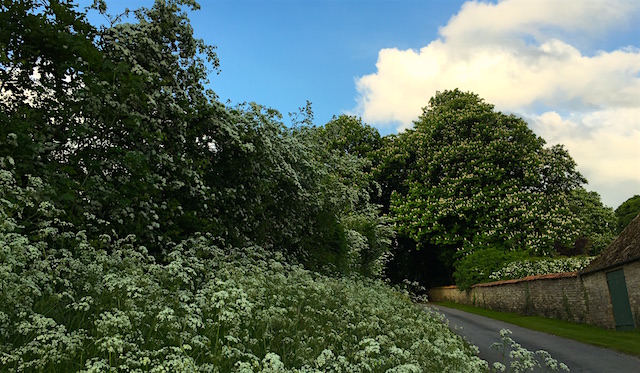
Now the hawthorn hedges around the carpark and village are covered with small white blossoms arranged in clusters. The dense wood and knarled outline of a mature hawthorn trunk gives the appearance of extreme age. When the tree is festooned with blossom, the combination of age and vitality is a potent emblem of spring.
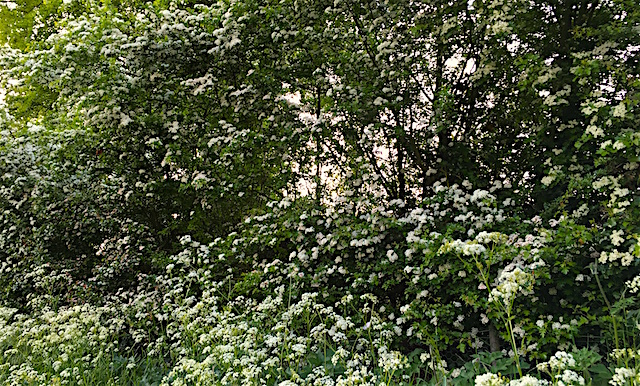
The trees form a cascade of white that splashes onto the cow parsley below.
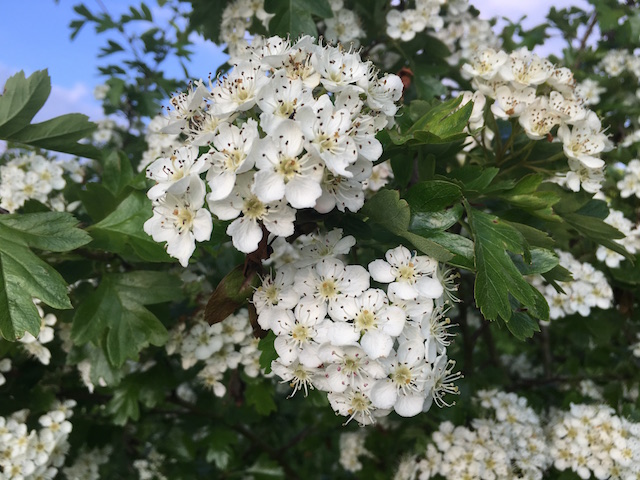
Seen in detail, there is an unexpected sophistication to these generous white flowers.
The growth rate of hawthorn trees is quite fast so they may be pruned in winter. Hedges should be pruned after flowering and, to keep it neat, again in autumn. Leaving the second pruning, will give you more flowers in spring the following year. Typically, we have a ‘do as I say, not as I do’ approach and opt for one late summer cut which is when the birds have finished nesting and we have time to tidy the hedge up. As you can see, we still get a smattering of flowers.
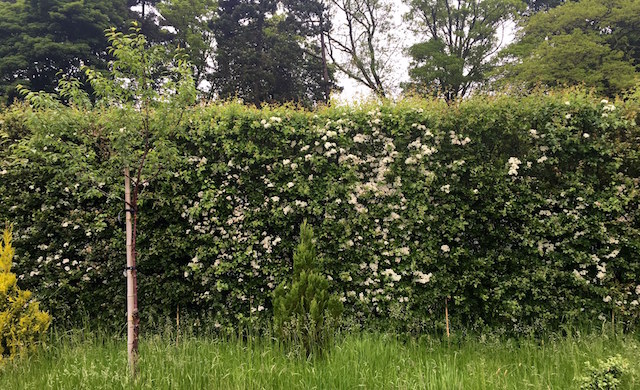
Apple blossom is showing for the first time in our orchard.
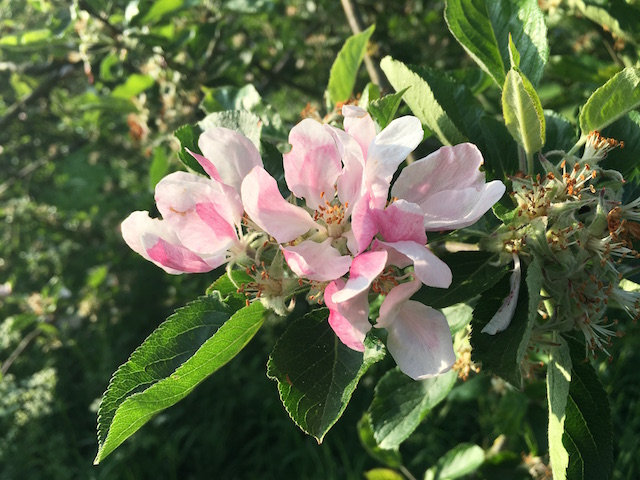
We have an infestation of apple capsid bug which shouldn’t affect fruit production but will lead to marks on the ripe apples; a pity, but for now we are just grateful for the first ever blossom on our young trees. The tatty foliage on the greengage trees is also caused by these little bugs. We don’t like to spray while the trees are in flower; it is far too indiscriminate and will harm pollinators like bees so we may try a wash in early spring to attack the eggs early next year. The adults will lay eggs in nooks and crannies for overwintering.
Speaking of damage to blossom, the lilac blight on the rare shrubs in the meadows, has become too serious to ignore. This is a bacterial infection and is highly localised at the moment, just confined to the lilacs in the rose meadows. Suggested treatment includes copper sulphate in late winter which we will try next year. Incidentally, Syringa vulgaris ‘Zulu’ seems the most resistant to blight.
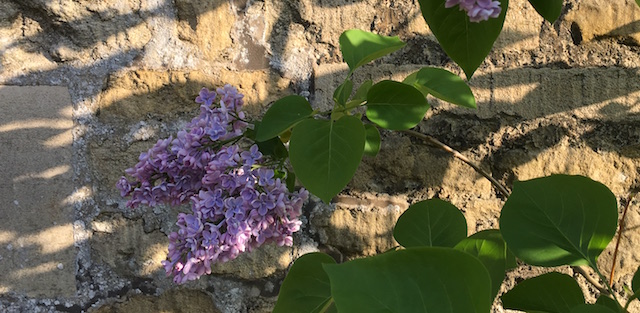
This image is of a very beautiful old double lilac that survives in the gardens from 100 year old stock. At the time, lilacs symbolised the remembrance of a first love. We have established this sucker in a large tub by the entrance to the gardens. It greets visitors with its beautiful scent.
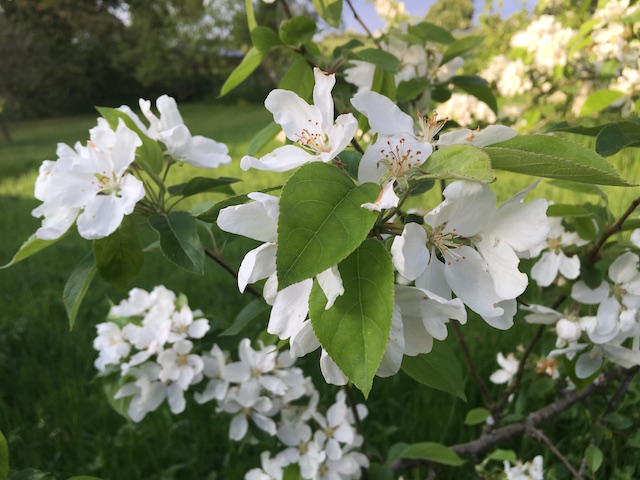
Elsewhere in the garden things are much rosier. The crabapple blossom has turned pure white and sends showers of confetti onto the long meadow grasses and under your feet as you walk.
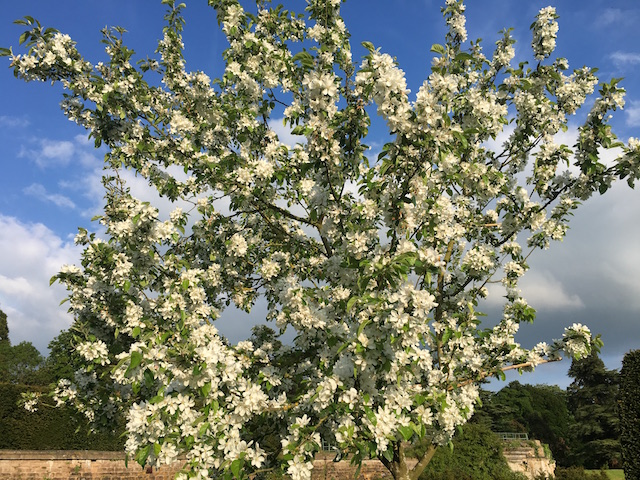
Nearby, the wisteria is spectacular this year.
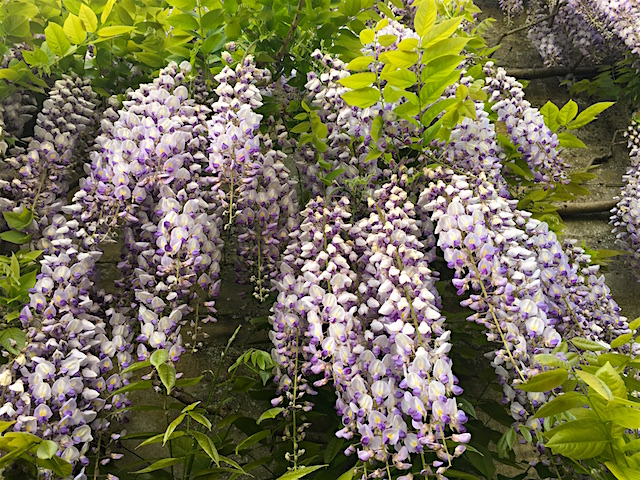
This is Wisteria floribunda ‘Burford’ taken from an original climber at Burford House in Oxfordshire. The very long racemes with dark purple and lilac pea flowers and a beautiful scent require a pilgrimage every day while they are in flower. Long whippy growth on wisterias will need pruning twice a year, once after flowering back to 3-5 buds and then again in late winter back to 2-3 buds. It is also a good idea to give them a slow release, high potash feed in Spring to boost flower production the following year. This is particularly important if you see the foliage turning pale or chlorotic later in the year suggesting it is under stress.
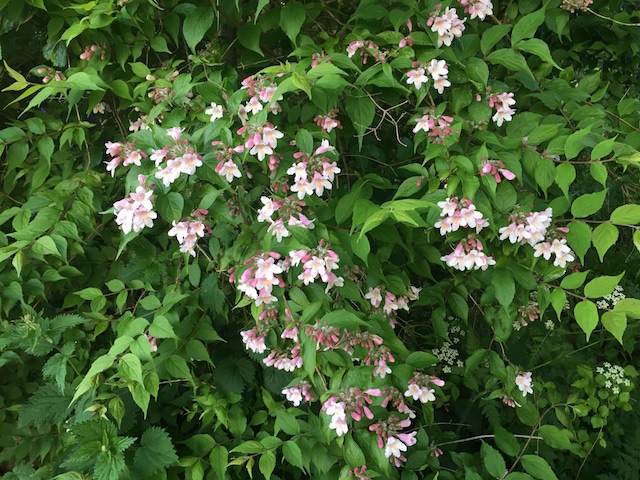
For totally undemanding blossom, you could try Weigela florida which, here, is confined to some of the most unpromising parts of the garden where it is dry or in semi-shade. Completely uncomplaining on our alkaline soil it will produce corymbs of flowers on last year’s growth. Like many spring flowering shrubs, it should be pruned after flowering.
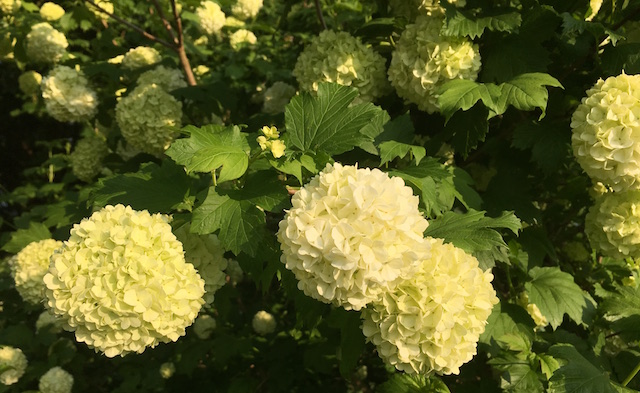
Viburnums are excellent sources of spring blossom but the queen is really Viburnum opulus var. roseum better known as the snowball tree. The lime green buds open to become pure white and are excellent cut for the vase if you split the bottom of the stems with secateurs. Here they are in the White Space Garden.
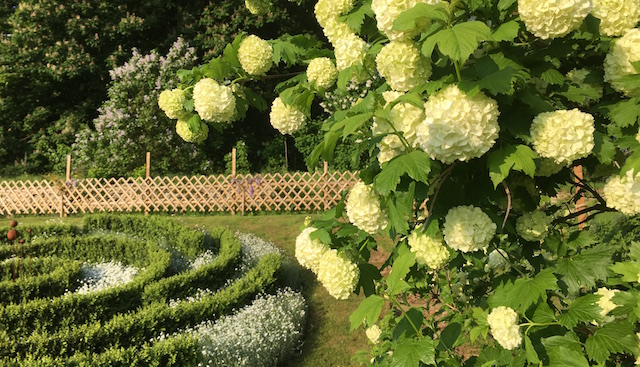
Beyond the hedge is our ‘Sakura’ moment. Sakura is the Japanese for cherry blossom and the source of a traditional Japanese folk song of Spring, the season of cherry blossom.
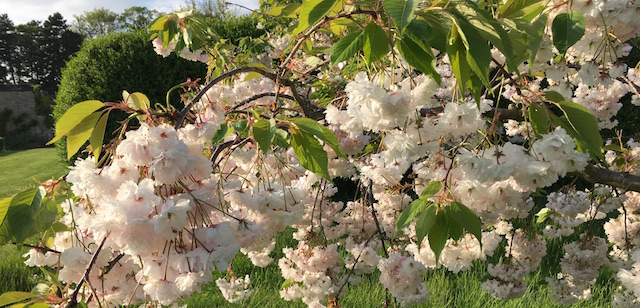
As you round the hedge alongside the velvet border, 16 cherry trees are in full bloom. Our variety is Prunus ‘Shogetsu’, chosen for the broad shape of the trees, the exquisite blossom in white and pale pink and for the later flowering period. This is one of the last of the flowering cherries to break out in all its spring glory.
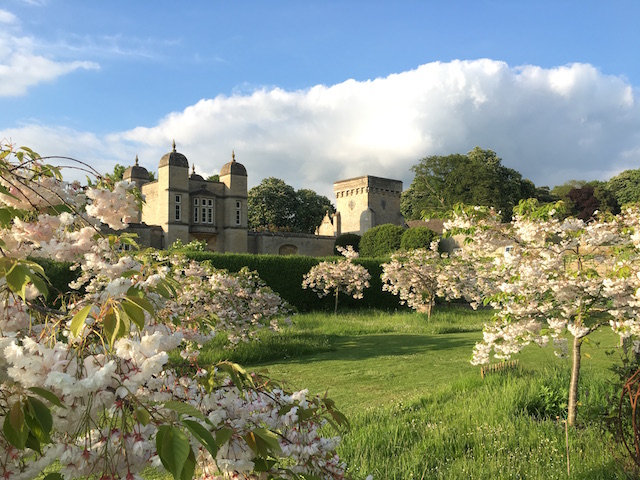
The great cherry, Prunus ‘Tai Haku’ is already going over at the top of the gardens. These are ornamental cherries and the glory is in their flowers. If you want fruit you will need to chose sweet cherry cultivars (usually prefixed Prunus avium) or cooking cherries (usually prefixed Prunus cerasosus.) We grow P. avium ‘Stella’ and ‘Early Rivers’ on the wall of the old peach house – they are supposed to be sweet but in our experience, are better for cooking. Our ornamental cherries will now recede into the landscape until Autumn when their leaves colour up in orange, red and yellow.